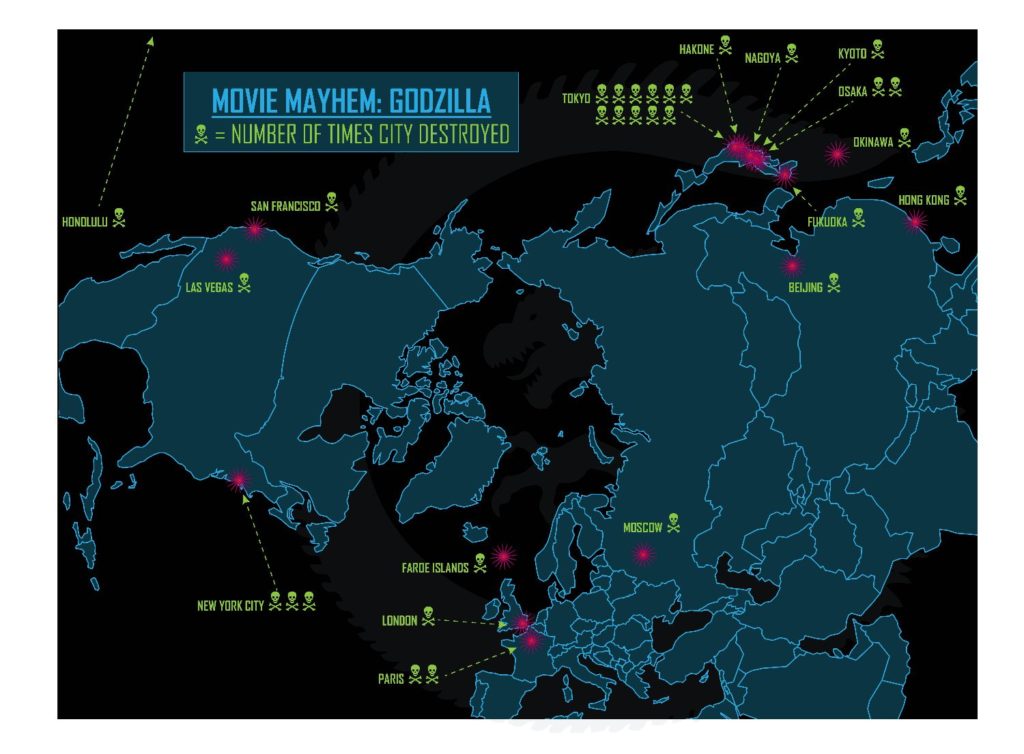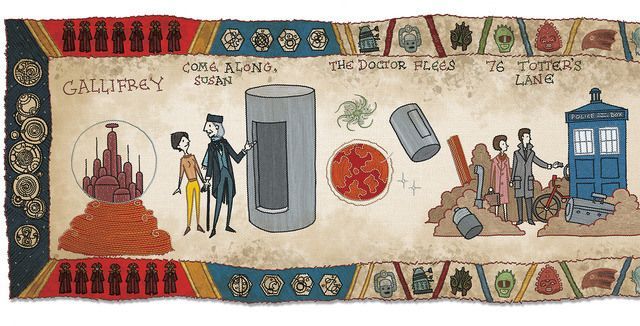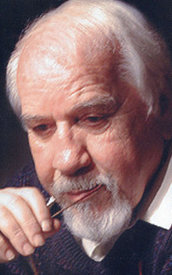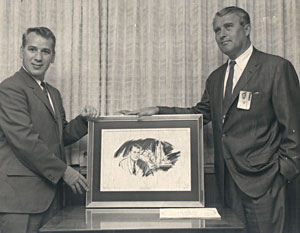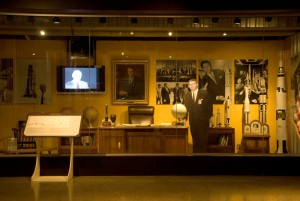(1) FUTURE TENSE. The January 2020 entry in the Future Tense Fiction series is “The Truth Is All There Is,” by Emily Parker, a short story about a world in which everyone is happily chained to the blockchain.
Mila sits at her desk, watching a dancer twirl around on her screen. Then she records an audio prediction.
“Retro, contrarian, but still ballet. How much can you watch?” she tells her audience. “I give her 2.68 more days of hype.”
That’s the entire story. By late afternoon Mila’s words have reached more than 3 million people, which she predicted as well. End-of-hype predictions track well and bring automatic bonuses if they turn out be true.
It was published along with a response essay, “Trust No One. Not Even a Blockchain.”, by blockchain expert Jill Carlson.
…Blockchain devotees say the technology can solve our trust issues—that it is trustless, that it requires no trust. This is the phrase that has launched a thousand corporate projects and startup companies. These startups purport that their blockchain technology will enable us to ensure that our vegetables are organically sourced, our diamonds conflict-free, and our data securely our own. The authorities making these promises present the technology in opaque terms and emphasize its complexity. Ironically, this technology that promises transparency and verifiability is presented as completely inscrutable.
(2) SHATNER DIVORCE SETTLED. The Daily Mail reports William Shatner is free again.
William Shatner, 88, has finalized his divorce from his fourth wife, Elizabeth Martin, after nearly 19 years of marriage.
Going into the legal proceedings, the legendary actor, who played Captain Kirk on Star Trek, had a net worth of over $100 million.
In the end, the actor was able to keep the bulk of his fortune because he had an iron-clad pre-nuptial agreement in place before they were married in 2001.
That puts Bill back in play, just like Jeff Goldblum’s Jurassic Park character who says, “I’m always on the lookout for a future ex-Mrs. Malcolm.”
(3) WFC 2020 RATES GOING UP. World Fantasy Con 2020’s registration rate goes up to $250 on February 17. Take advantage of it today by visiting the WFC 2020 website.
(4) READ FAFNIR. The 2/2019 issue of “Fafnir – Nordic Journal of Science Fiction and Fantasy Research” is online, a Special Edition on Speculative Climate Fiction. In addition to the topical articles you’ll find Jani Ylönen’s report on the “Worldcon 77 Academic Track” and Janice M. Bogstad’s review of Iain M. Banks by Paul Kincaid.
(5) HAPPY BIRTHDAY DR. STRANGELOVE. [Item by Cat Eldridge.] On January 29, 1964, Dr. Strangelove or: How I Learned to Stop Worrying and Love the Bomb premiered. With a stellar cast of Peter Sellers, George C. Scott, Sterling Hayden, James Earl Jones and Slim Pickens, it was directed by directed, produced, and co-written by Stanley Kubrick.
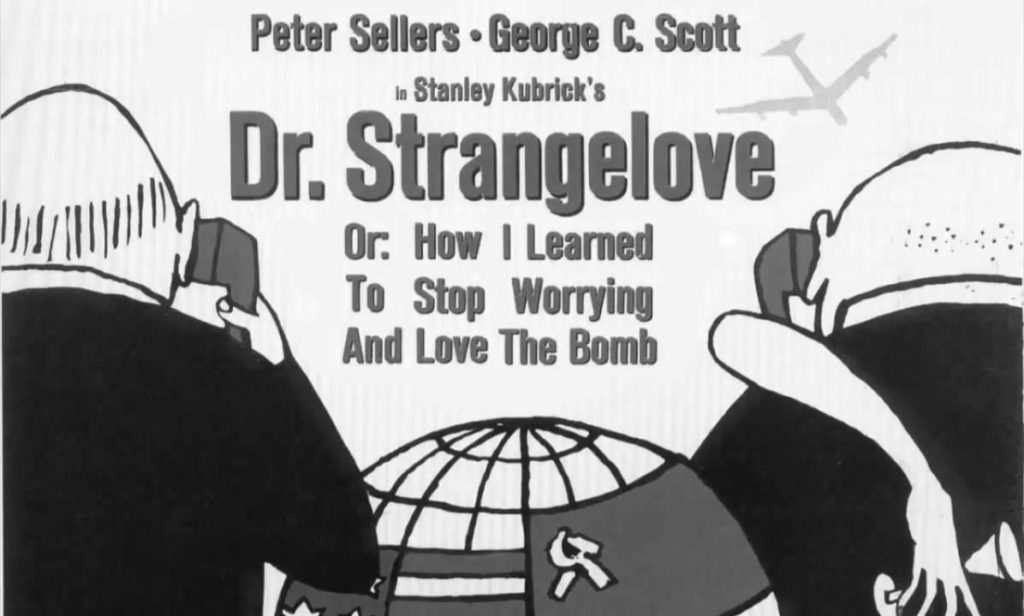
It was not the original title, as Kubrick considered Dr. Strangelove’s Secret Uses of Uranus as well as Dr. Doomsday or: How to Start World War III Without Even Trying, and the much shorter Wonderful Bomb.
The film is somewhat based on Peter George’s political thriller Red Alert. (Originally called Two Hours To Doom.)Curiously Dr. Strangelove did not appear in the book. This novel’s available on Kindle. And George’s novelization of the film is on all digital sources. If you purchase it, it has an expanded section on Strangelove’s early career.
It would not surprisingly win the Hugo for Best Dramatic Presentation at Loncon II in London in 1965 with The Seven Faces of Dr. Lao being the only other film on the final ballot.
The film was a box office success. Critics were universal in their belief that it was one of the best films ever done with Ebert saying it was “arguably the best political satire of the century”. At Rotten Tomatoes, it currently holds a 94% rating with over 200,000 reviewers casting a vote.
A sequel was planned by Kubrick with Gilliam directing though he was never told this by Kubrick and only discovered this after Kubrick died and he later said “I never knew about that until after he died but I would have loved to.”
The original theatrical trailer is here.
(6) MUTUALLY ASSURED DESTRUCTION. In “Fail Safe: Very Little Left of the World”, Bilge Ebiri contrasts and compares Dr. Strangelove and Fail Safe for readers at The Criterion Collection.
…Both movies show men operating within remorseless systems (in fact, both show men operating within the same remorseless system, namely the United States nuclear apparatus), but in Strangelove’s case, there’s a liberating nihilism to Kubrick’s vision, as the system unleashes the characters’ monstrosity—their zeal for war, their twisted notions of civilization, their fantasies of survival. With Fail Safe, while the system defeats the characters, the film allows them to assert their humanity in small yet profound ways, as Lumet puts us in the middle of this drama with an immediacy that evokes the title of one of the CBS television shows on which he cut his teeth in the fifties: You Are There. Kubrick may still make us weep for the world (albeit by first making us laugh at it), but Lumet makes us weep for ourselves and our loved ones.
(7) HEY BOOMER. The Ohio Light Opera will be doing a production of an operetta based on the Jules Verne novel From the Earth to the Moon. How will they fit that cannon on stage?
VOYAGE TO THE MOON
(1875)
Music by Jacques Offenbach
Original French Libretto by Albert Vanloo, Eugène Leterrier, and Arnold Mortier
English Libretto by Steven A. Daigle, Henry S. Leigh, and Eric BeheimOver 41 seasons, OLO shows have been set in such exotic locales as Peru, Russia, Madrid, Indonesia, China, Greece, and even Hades. So, what’s left, you may ask? How about the moon! Inspired by Jules Verne’s 1865 novel From the Earth to the Moon, Jacques Offenbach and his librettists created, in Voyage to the Moon, a wonderfully wacky work, but with some of the composer’s most exalted operettic music. Prince Caprice, bored with life on Earth, has no interest in inheriting the crown from his father, King V’lan—he wants to go to the moon for some excitement. He engages the King’s scholar, Microscope, to find a way of getting him there. The sage returns days later with a 20-mile-long cannon, which propels him, Caprice, and V’lan to the lunar surface. There they meet their equivalents: King Cosmos, his advisor Cactus, and the Princess Fantasia. Among other “adjustments,” the earthlings must deal with the reality that, on the moon, love is considered a disease. Caprice has fallen hard for Fantasia, but, for obvious reasons, she shuns him. But Caprice has brought with him some apples … get it?
(8) CAPLAN OBIT. Freida Caplan, who introduced kiwis to the U.S. market, also had a science fiction connection — she supplied the “alien” fruits for Star Trek episodes, which helped boost sales: “‘Kiwi Queen’ Frieda Caplan, produce-industry pioneer, dies at 96”.
She was Frieda Rapoport Caplan, a tenacious maven credited for introducing kiwis, mangoes, habanero and shishito peppers, passion fruit, bean and alfalfa sprouts, baby carrots, sugar snap peas, starfruit, blood oranges, shiitake mushrooms, turmeric, and hundreds more fruits and vegetables into the supermarket mainstream. Into the bellies of American consumers.
(9) TODAY IN HISTORY.
- January 29, 1989 — Lobster Man from Mars premiered. This comedy was a spoof of Fifties SF films. It was directed by Stanley Sheff, and it starred Tony Curtis and Patrick Macnee. It was shot on a shoestring budget of less than a million dollars. It had its world premiere at the Sundance Film Festival in 1989. When it went into general release is uncertain. No reviews from critics were but it does have a 43% rating by reviewers at Rotten Tomatoes. You can watch it here.

(10) TODAY’S BIRTHDAYS.
[Compiled by Cat Eldridge.]
- Born January 29, 1913 — Victor Mature. He’s best remembered for his first leading role, as a fur-clad caveman in One Million B.C., and until he showed up on Voyage to the Bottom of the Sea as Sparks in the “Deadly Creatures Below!” episode, his only genre role. (Died 1999.)
- Born January 29, 1918 — Robert Pastene. He played the title role in the first televised Buck Rogers series on ABC that also had Kem Dibbs and Eric Hammond in that role. 35 episodes were made, none survive. As near as I can tell, his only other SFF performance was on the Out There and Lights Out series. (Died 1991.)
- Born January 29, 1932 — Paddy Chayefsky. In our circles known as the writer of the Altered States novel that he also wrote the screenplay for. He is the only person to have won three solo Academy Awards for Best Screenplay. The other winners of three Awards shared theirs. He did not win for Altered States though he did win for Network which I adore. (Died 1981.)
- Born January 29, 1940 — Katharine Ross, 80. Her first genre work was as Joanna Eberhart in The Stepford Wives, scary film that. She shows up next as Helena in The Swarm and plays Margaret Walsh in The Legacy, both horror films. The Final Countdown sees her in the character of Laurel Scott. And Dr. Lilian Thurman is her character in the cult favorite Donnie Darko. I’m fairly sure that the only genre series she’s done is on The Wild Wild West as Sheila Parnell in “The Night of the Double-Edged Knife”, and she did an episode of Alfred Hitchcock Presents as well.
- Born January 29, 1945 — Tom Selleck, 75. Setting aside the matter of whether Magnum P.I. is genre which some of you hold to be true, he was Sgt. Jack R. Ramsay in Runaway which is most definitely SF. He recently did some voice acting by being Cornelius, Lewis’ older self, in the animated Meet the Robinsons film, and he showed up s himself in the “What Do You Want to Be When You Grow Up?” of the Muppet Babies nearly forty years ago.
- Born January 29, 1958 — Jeph Loeb, 62. His first comic writing work was on the Challengers of the Unknown vol. 2 #1 in 1991 with Tim Sale. I’m pleased to say that it was in the DC Universe app so I just read it and it’s superb. He’d go on to win three Eisners for his work for Batman/The Spirit #1, Batman: The Long Halloween and Batman: Dark Victory. And he’s also a producer/writer on such genre series such as Smallville, Lost, Heroes and Teen Wolf.
- Born January 29, 1970 — Heather Graham, 50. Best known SF role was no doubt Dr. Judy Robinson on the Lost on Space film. She played also Felicity Shagwell that year in Austin Powers: The Spy Who Shagged Me. And she was Annie Blackburn on Twin Peaks.
- Born January 29, 1988 — Catrin Stewart, 32. Jenny Flint in five episodes of Doctor Who. She was friends with Madame Vastra and Strax (informally known as the Paternoster Gang) who appeared first during the Eleventh Doctor and last during the Twelfth Doctor. Big Finish has continued them in their audiobooks. She also played Stella in two episodes of the Misfits series, and was Julia in a performance of 1984 done at London Playhouse a few years back.
(11) COMICS SECTION.
- Unshelved: the library comics strip deals with somebody who’s surprised when it turns out the familiar-sounding story isn’t the one they assumed was under discussion.
(12) OSCAR TIME. “Avengers: Endgame – How we made the visual effects” – the BBC video shows how little of what we saw was actually shot as we saw it.
Avengers: Endgame is one of five movies competing at the 2020 Oscars for best visual effects.
Al Moloney spoke to Framestore’s Stuart Penn about the challenges of creating the effects for the film.
(13) RARA AVIS. The BBC’s Melissa Hogenboom asks “How did the last Neanderthals live?”
In many ways, the last surviving Neanderthals are a mystery. But four caves in Gibraltar have given an unprecedented insight into what their lives might have been like.
Forty thousand years ago in Europe, we were not the only human species alive – there were at least three others. Many of us are familiar with one of these, the Neanderthals. Distinguished by their stocky frames and heavy brows, they were remarkably like us and lived in many pockets of Europe for more than 300,000 years.
For the most part, Neanderthals were a resilient group. They existed for about 200,000 years longer than we modern humans (Homo sapiens) have been alive. Evidence of their existence vanishes around 28,000 years ago – giving us an estimate for when they may, finally, have died off.
Fossil evidence shows that, towards the end, the final few were clinging onto survival in places like Gibraltar. Findings from this British overseas territory, located at the southern tip of the Iberian peninsula, are helping us to understand more about what these last living Neanderthals were really like. And new insights reveal that they were much more like us than we once believed.
In recognition of this, Gibraltar received Unesco world heritage status in 2016. Of particular interest are four large caves. Three of these caves have barely been explored. But one of them, Gorham’s cave, is a site of yearly excavations. “They weren’t just surviving,” the Gibraltar museum’s director of archaeology Clive Finlayson tells me of its inhabitants.
…The remains of more than 150 different species of bird have also been uncovered in Gorham’s cave, many with tooth and cut marks, which suggests Neanderthals ate them.
There is even evidence they caught birds of prey, including golden eagles and vultures. We don’t know if they laid out meat and then waited for the right opportunity to go in for the kill, or whether they actively hunted birds, a much more difficult task. What we do know is that they didn’t necessarily eat all the birds they were hunting, especially not the birds of prey like vultures – which are full of acid.
“Most of the cut marks are on the wing bones with little flesh. It seems they were catching these to wear the feathers,” says Clive Finlayson. They seem to have preferred birds with black feathers. This indicates they may have used them for decorative purposes such as jewelry.
(14) SPACE CONNECTION. “How worried should we be about ‘Big Brother’ technology?”
Peenemünde is a port in northern Germany, where the River Peene meets the Baltic Sea.
There, in October 1942, German engineers sat in a control room watching a television screen. It showed live, close-up images of a prototype weapon on its launch pad some 2.5km (1.5 miles) away. On another screen, with a wide-angle view, they saw the weapon surge skywards.
The test had succeeded. They were looking at something that would shape the future – but perhaps not in the way they imagined.
…Wernher von Braun, the brilliant young engineer behind the V2, surrendered to the Americans as the Third Reich fell, then helped them win the space race.
If you had told him that his rocket test would be the first step towards putting a man on the Moon, he would not have been surprised. That is exactly what motivated him.
At one point, he was briefly arrested after someone on a train overheard him say that he wished he could build spaceships instead of weapons, and reported this suspiciously non-conforming thought to the Gestapo, the Nazi secret police.
But von Braun might not have anticipated that he was also witnessing the birth of another hugely influential technology – one the Gestapo would have loved in its modern form – closed-circuit television, better known as CCTV.
(15) WHERE IS IT NOW. The BBC tells of “An atomic marker hidden in plain sight”.
In the courtyard of a gift shop decorated with colourful ceramic frogs and dragonflies, it’s easy to overlook the historic marker.
Perhaps that’s fitting for a secret site.
In the early 1940s, the world’s top scientists and their families trudged through this patio, bedraggled from a cross-country train trip. Most didn’t know where they were headed. All they had were classified orders to report to the address “109 East Palace, Santa Fe, New Mexico”. When they opened the wrought iron gate, they entered what the National Historical Landmark plaque calls a “portal to their secret mission”, which was to build the atomic bomb.
“They came in through the courtyard,” said Marianne Kapoun, who with her husband owns The Rainbow Man gift shop, which occupies the formerly classified facility. Visitors now enter the shop through a front door; the historical entrance where scientists like Enrico Fermi and Richard Feynman once passed, is blocked, and the walkway cluttered with dangling ceramic chillies and hand-painted jack-o-lantern gourds.
The newcomers, which included a contingent of British scientists, were issued security passes and loaded from the facility onto a bus or a Jeep for the last leg of their journey. Their destination lay 35 miles away, up tortuous, unpaved mountain roads, in the hidden settlement of Los Alamos. And what they eventually accomplished, the plaque says, was “one of the greatest scientific achievements in human history”.
But few modern visitors to Santa Fe, a Spanish colonial city known for its adobe buildings and art galleries, realise they’re crossing paths with Nobel laureates – and a nest of spies.
[Thanks to John King Tarpinian, Andrew Porter, JJ, Mike Kennedy, Martin Morse Wooster, Chip Hitchcock, Daniel Dern, Scot Edelman, Michael Toman, and Cat Eldridge for some of these stories. Title credit goes to File 770 contributing editor of the day Acoustic Rob.]

